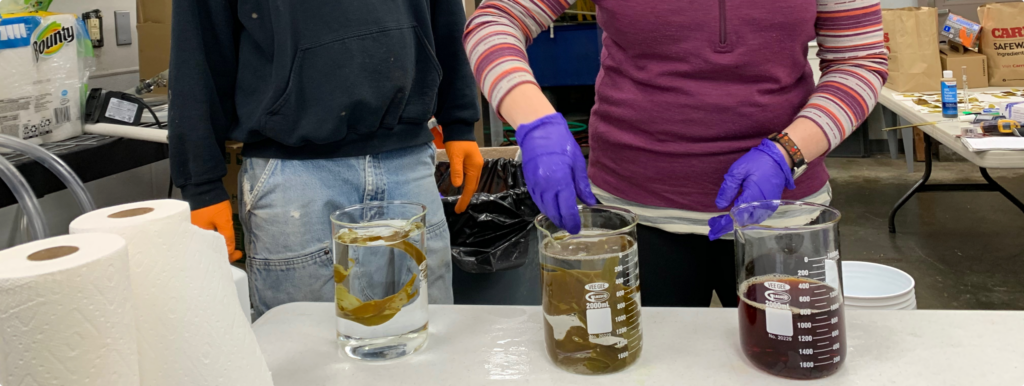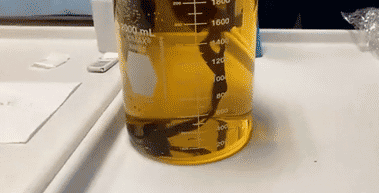Back to: Seeding
Next, is yet another step to try and eliminate anything that may be living on your sorus tissue. This consists of a dip in a cleaning solution followed by a thorough rinse with chilled, filtered seawater. If the person doing the iodine dip was also just cleaning the surface of the sorus tissue (as described in the previous step), it is essential to change gloves before the cleaning step. You do not want all the contamination you just worked so hard to remove ending up back on your tissue! For the cleanest cultures, we recommend using separate small beakers for each piece of sorus and pouring the cleaning solution and seawater rinse into each beaker; the protocol at the end of this lesson describes this process.


Make your iodine solution with 5mL of iodine per liter of chilled, filtered seawater and dip each piece of sorus for 30 seconds. After the 30 second dip, you should generously swirl the tissue in chilled, filtered seawater for at least 15 seconds. The strength of this solution and the “dip time” can vary a bit from hatchery to hatchery; there is room for experimentation on what works best for your facility. After the initial scraping step, sorus tissue should be handled with tweezers. The tweezers should be rinsed and wiped with ethanol between each blade. GreenWave has switched to a slightly different sorus cleaning process that is outlined here in the Sorus Processing Protocol.
Once you are confident that all the residual iodine solution has been rinsed away, pat each piece of tissue dry with paper towels until it has a matte appearance. As always, make sure you have clean gloves.
GreenWave has switched to using a chlorine solution in place of iodine for this cleaning step. If you choose to go this route, it’s recommended to avoid household bleach and instead buy lab-grade sodium hypochlorite solution and make a 0.5% solution (10 mL NaOCl per 1 L chilled, filtered seawater).
GreenWave Tip
Chilled, filtered seawater is a critical prep item for processing your sorus tissue. We also find that we need it for various tasks throughout the season, so when we fill our tanks during our weekly water changes, we’ll also fill a few gallon jugs or carboys to store in the fridge to have on hand.